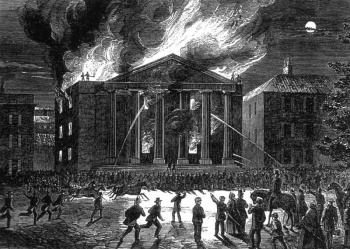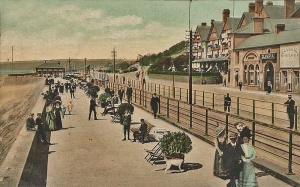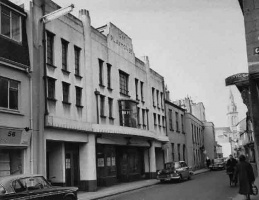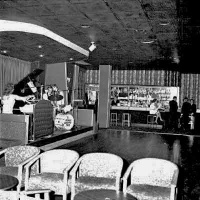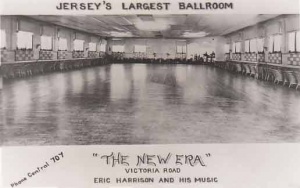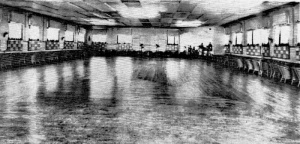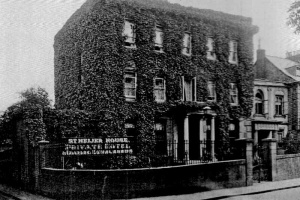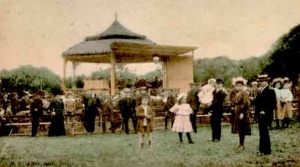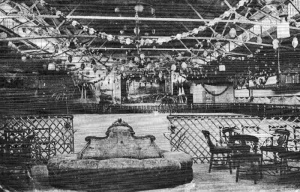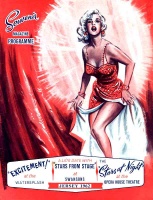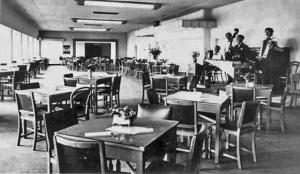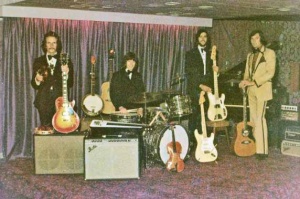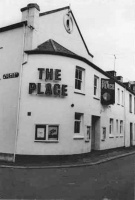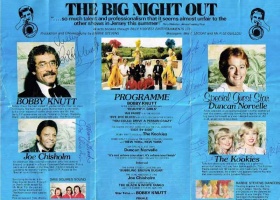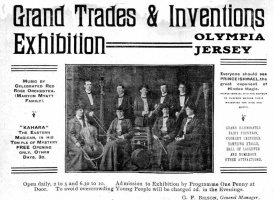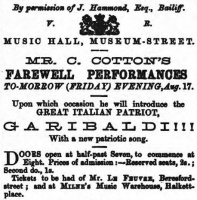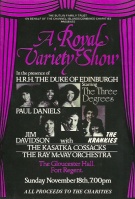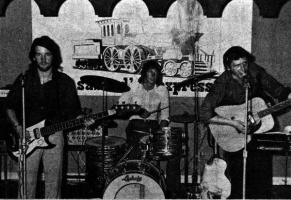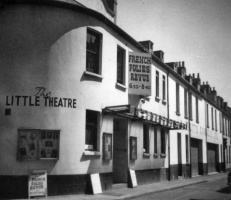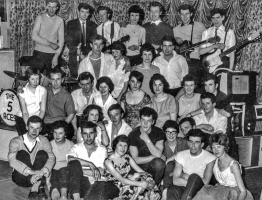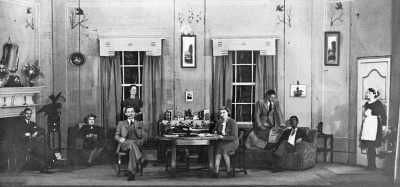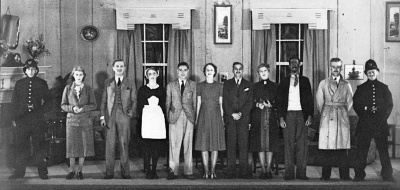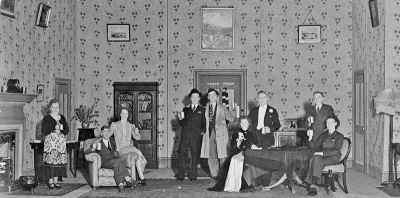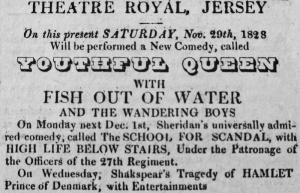Permanent theatre
A demand for theatre started to develop in the last 20 years of the 18th century and there are early references to a Theatre Royal, although there is considerable confusion between various locations given the same name in this era. The first room devoted to the theatre appears to have been in a building adjacent to the opening into the Royal Square near the Town Church.
The first permanent theatre was opened in Regent Road on 4 August 1802 by James Shatford, an actor from Salisbury, who bought a barn which had previously hosted farces and other humourous presentations by visiting groups from England. Shatford built a new theatre with three tiers of seats, and it opened in 1806 as Jersey's first Theatre Royal. He was to die only three years later, leaving his widow Sara to run the theatre for a number of years.
Crescent theatre fire
The next theatre to be built was in the centre of Don Crescent on Don Road. It opened on 5 May 1828 but was not a commercial success. Thirty years later the company owning the theatre tried in vain to sell it, and a further five years later, in 1863, a severe blaze totally destroyed the building, which had only been insured for £1,000, a fifth of what it cost to build.
The theatre was never to be rebuilt and the next move was the construction of a new venue in Gloucester Street, also called the Theatre Royal and today known as the Opera House. It has been the island's main theatre ever since, despite two disastrous fires. Other theatrical venues have included the Little Theatre, which closed in February 1959, and the Playhouse, which opened in 1937 and lasted less than 50 years. There was also a venue called the Union Jack Club in the late 19th century. An 1881 photograph can be found in the gallery below.
The Playhouse was just starting to build a good reputation when the Germans arrived in 1940, having seen two performances by up-and-coming actor Donald Pleasance the previous year.
Music venues
In the second half of the 20th century music was the form of public entertainment most in demand, and dozens of venues small and large played host to dance bands, jazz ensembles and then the pop groups spawned by the new developments in music in the '50s and '60s.
Throughout the 20th century the main venue for such entertainment was West Park Pavilion. This venue started life a a simple hangar-like structure with a corrugated iron roof, and was known by most as the 'Tin Hut'. It was rebuilt in 1931 and over the years it was also known as Behans' and the Inn on the Park, before it finally closed to make way for a block of flats.
Three other large dance halls were built before the Second World War to cater for the numbers of young people whom the Pavilion could not accommodate at the weekend. There was a large ballroom at Springfield Stadium, which was the venue for many pop concerts in the 'sixties, including performances by The Beatles in 1963 and the Rolling Stones the following year.
The Plaza ballroom was part of the Wests Cinema building on the corner of Bath Street and Beresford Street and the Rainbow Room at Georgetown eventually shared its building with the New Era Cinema. The Forum Cinema which opened in Grenville Street in 1935 had a large stage and was designed as a multi-purpose venue, but after the German Occupation, which saw it as the main cinema for German troops, its use was largely confined to the screening of films, until it was eventually demolished to make way for an office complex. It did host some stage shows in its early days, and one of the performers was a very young Julie Andrews.
Other large venues included the Greve de Lecq Pavilion, which burned down in the 1980s and was rebuilt at Caesar's Palace, a cabaret venue targeted at holidaymakers. It was popular to begin with but a decline in visitor numbers and the diminishing interest in traditional seaside resort cabaret led to its demise and eventual replacement by housing.
Outdoors
Some of the earliest musical concerts were staged outdoors. A bandstand in the Triangle Park at West Park was a very popular venue, and if the weather was inclement performance could always move indoors at the nearby Tin Hut.
There is still a covered bandstand in Howard Davis Park, mainly used for performances by visiting military bands.
In the early years of the 20th century the Chalet Hotel, Pontac (now La Fontaine) had its own bandstand and staged concerts throughout the summer. The proximity of Pontac Station made this a popular venue for people travelling from St Helier or Gorey at the other end of the line.
Hotels
Entertainment facilities in hotels before the Second World War varied from bars with a small stage for a pianist or duo, to full-blown dancehalls, which offered entertainment for holidaymakers and island residents. Among those which had large ballrooms were the Ritz Hotel; Aberfeldy Hotel; La Moye Hotel, a very popular venue for dance bands; Woodville Hotel; Palace Hotel, destroyed by fire during the Occupation; and the Merton Hotel.
As hotels expanded, ground floor space was often at a premium for dining rooms and guest lounges and the larger ballrooms began to disappear. Several hotels, however, still retained entertainment rooms which were used in the second half of the 20th century for the very popular cabaret shows which were a feature of many British seaside resorts.
Among the most popular cabaret venues were Swanson's, the Sunshine Hotel, the Demi des Pas Hotel, and stand-alone venues including Sands, the Tropicana, the Watersplash, Caesar's Palace and the Hotel de France.
The larger venues had their own shows and many performers became very popular and returned year after year. Other venues hosted travelling cabaret shows, which moved from one establishment to another, sometimes peforming three shows a day.
Discos and clubs
Part of the reason for the decline in live music and cabaret was that, for those wanting to dance, the advent of the discotheque presented a much more cost-effective source of music. Discos and nightclubs abounded, popular venues including the Skyline Disco at the Hotel de France; Les Arches Hotel; the Deep; the Blue Fox; the Royal Hotel, David Place; Lord's; the Hotel de L'Europe; Adrian's at L'Etacq, formerly the Bal Tabarin and, before that, La Mare du Mont. The days of live music in the Ritz Folk Club, Wolf's Caves (country music), the Corner House at Charing Cross, La Tonnelle at St Helier House Hotel and Tam's Pantry, to name but a few, were a thing of the past.
Fort Regent
Finally, no history of entertainment venues in Jersey is complete without the largest of them all, Fort Regent. Developed from an abandoned military fort into a multi-purpose sports and entertaiment centre in the 1970s, it has a large auditorium, the Gloucester Hall, under the roof of the centre rotunda, which has hosted some the top stars of popular and classical music and other entertainers over some 35 years, although major events have become less frequent as the tourism industry has declined.
Jersey Amateur Dramatic Club performances during the Occupation
Theatre Royal advertising
Sources
A Century of Music in Jersey by Chas E Larbalestier
